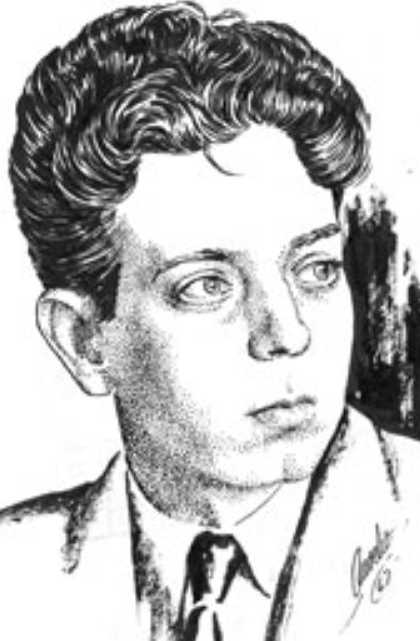4.1.1.12 The poetic work of Rubén Martínez Villena (1899 – 1934), first stage

The entire collection of Rubén Martínez Villena’s poetic work was published posthumously in 1936 under the title “La pupila insomne.” Following the chronological division made by José Antonio Portuondo, according to the aesthetic currents that most influenced the poet, the following periods will be addressed—the first in this section: 1917–1922, 1923–1927, 1928–1934.
Between 1917 and 1922, the poet remained anchored to the modernist movement, even possessing a certain Parnassian tone in the exquisite care taken with his verse; but also with romantic reminiscences without indulging in the rhetoricalism that characterized the movement at times.
From a philosophical perspective, his verses capture a rather contemplative attitude toward the world, a search for the meaning of life in poetry and beyond. Although disenchantment with his circumstances is already present, this lacks political overtones; the poet simply senses the impossibility of personal fulfillment within the prevailing status quo, without yet delving into the underlying causes.
His first text, “Peñas Arriba”, from 1917, already expresses this anguish without clear foundations:
“Long slope of living,
steep and lofty peak
where I go “up rocks”
without faith to continue.
How can I upload you?
burdened with this cross?
Tear the gloomy hood
the sun you are heading for,
and my crown of thorns
become a halo of light.
Because my being needs,
to continue on their way,
some change in fate
under which he cries and shakes.
An infinite passion,
something to end my mourning,
and fulfilling my wish
by overcoming my bitterness
left my soul so pure
like a piece of heaven…!”
This dissatisfaction of the poet, the need he points out for a radical transformation, even without specifying in what areas, undoubtedly indicates a stage in which he was developing his worldview as a man and in the making of the fundamental principles that would accompany him throughout his life.
Although a clear political tone is not yet appreciated, the love for the country was already present and several songs to its heroes are sung. The verses of “El rescate de Sanguily”, “19 de mayo”, “Simbolismo”, “27 de noviembre”, “Ignacio Agramonte”, “Jimaguayú”, “Máximo Gómez” and “24 de febrero” are inscribed in this thematic line. In the stanzas of the latter, the idealization of the epic motif can be seen:
“The cry of Baire demanding freedom was heard,
a star shone in the midst of the hurricane
and in the golden glow that the symbol sheds
An Apostle appeared from the hand of a Titan.”
At the end of this period, a different attitude was emerging, perhaps because in 1922 he completed his law studies at the University of Havana, and this also contributed to his political formation, not so much in the university setting as in his contacts with students and professors who were somehow oriented towards the left and had become aware of the political situation and the disastrous role played by the United States.
His transition from modernism to a lyrical style with a certain avant-garde quality can be appreciated in Juan Nicolás Padrón Barquín’s opinion: “His poetry is dominated by the urban landscape and musical tone, in a rhythm that accompanies or interacts with the themes. One or more verses can deliberately break the modernist spell that has sometimes been constructed with an architect’s passion; a word or expression shatters the already rarefied atmosphere; with its mockery, it makes it earthly, humanizes it, and leaves it suspended in a doubt of double meanings.”








